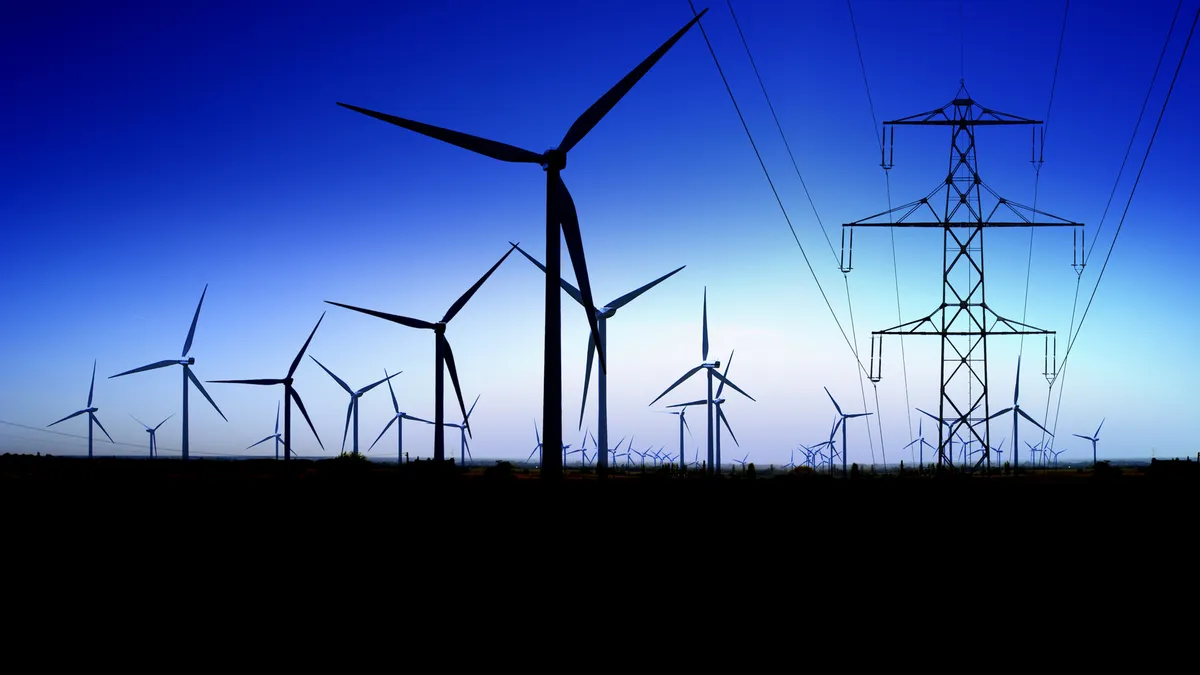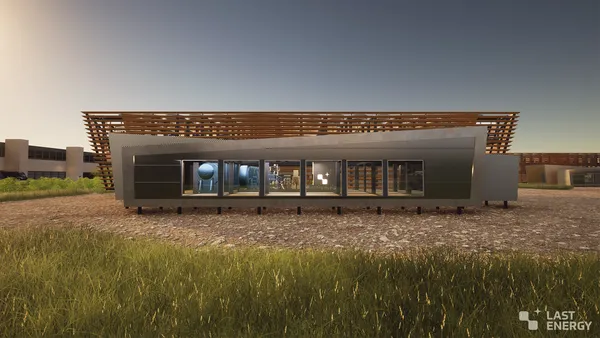Dive Brief:
- The U.S. Energy Information Administration's most recent long-term projections indicate renewable energy and natural gas will likely continue to grow regardless of what happens with the Clean Power Plan, and that the United States will become a net energy exporter sometime in the next decade.
- The 2017 Annual Energy Outlook reference case — based on existing policies, including the CPP — forecasts that wind, solar and natural gas will dominate capacity additions into the next decade, and that coal generation will continue a steady decline. Without the CPP, coal generation would remain steady through the 2020s.
- Carbon emissions are highest in test cases where the carbon regulations are scrapped; in the reference case, gas consumption is 6% higher by 2040 than in the scenario where the CPP is not implemented.
Dive Insight:
Even without the Clean Power Plan — which is currently stayed by the U.S. Supreme Court and being reviewed by appeals court judges — EIA expects the primary driver of new electric capacity will be the retirement of older, less-efficient coal plants.
"Even if the CPP is not implemented, low natural gas prices and the tax credits result in natural gas and renewables as the primary sources of new generation capacity," EIA said in its report.
But repeal of the plan could have a more significant impact on the generation share of each resource, EIA forecasted. Without the CPP, coal generation is forecasted to remain steady through the 2020s, with renewables and natural gas expanding at a slower rate.
Natural gas prices will also have a strong influence on the generation mix over the next decade, EIA said. Gas plants typically set the power auction prices in the nation's organized electricity markets, and low prices for their fuel could see coal generation decline significantly.
What happens to the EPA's new rules, which aim to reduce greenhouse gas emissions by 32% from existing power plants, will hinge on the next chief executive. President-elect Donald Trump takes office on Jan. 20, and opponents of Obama's EPA rules have urged the next leader to scrap them on Day 1.
If that happens, changes to the generation fleet would translate to greenhouse gas emissions, EIA said. Energy-related carbon emissions were highest in the test case without the CPP.
Energy consumption is consistent across all projections bounded by the high and low economic growth assumptions. EIA said that in its reference case, total energy consumption increases 5% between 2016 and 2040. But as a significant portion of energy consumption is related to economic activity, higher growth could lead to 11% rise in energy consumption by 2040. Lower economic growth would keep power demand flat.
"EIA’s projections show how advances in technology are driving oil and natural gas production, renewables penetration, and demand-side efficiencies and reshaping the energy future," EIA Administrator Adam Sieminski said in a statement.
Utility solar will drive additions; no unannounced nuclear expected
EIA expects almost 70 GW of new wind and solar capacity will be added by 2021, helped by declining capital costs and tax credits. After 2030, new capacity will be split primarily between solar and natural gas, with solar capacity representing more than 50% of new capacity additions through 2040.
Distributed solar will remain an important contributor, but most solar energy through 2040 will come from utility-scale installations.
No new, unannounced nuclear capacity is included in the base case, EIA said, because of the combination of low natural gas prices, higher renewables penetration, low electricity load growth, and relatively high capital costs. EIA said it included new capacity additions from reactors under construction from 2017 onward and to projected uprates at existing reactors. Beginning next year, thrugh 2040, EIA said 4.7 GW of additional capacity at existing units is projected to come online.
And a significant reduction in nuclear capacity will occur, EIA predicted, following 6.4 GW of total announced retirements, 3 GW of projected retirements in 2019–20, and 10.6 GW of long-term retirements through 2040.
"As many nuclear plants reach the 60-year subsequent license renewal decision after 2040, retirements continue, with another 11.7 GW of nuclear capacity projected to retire by 2050," EIA wrote.
The EIA also modeled the levelized cost of energy for various resources, finding wind and solar to be competitive with natural gas generation. The findings reflect similar results in Lazard's tenth annual LCOE study, released in December.
The full EIA Annual Energy Outlook is available for download here.














